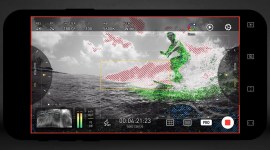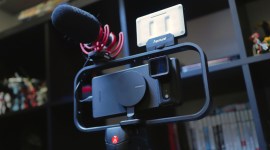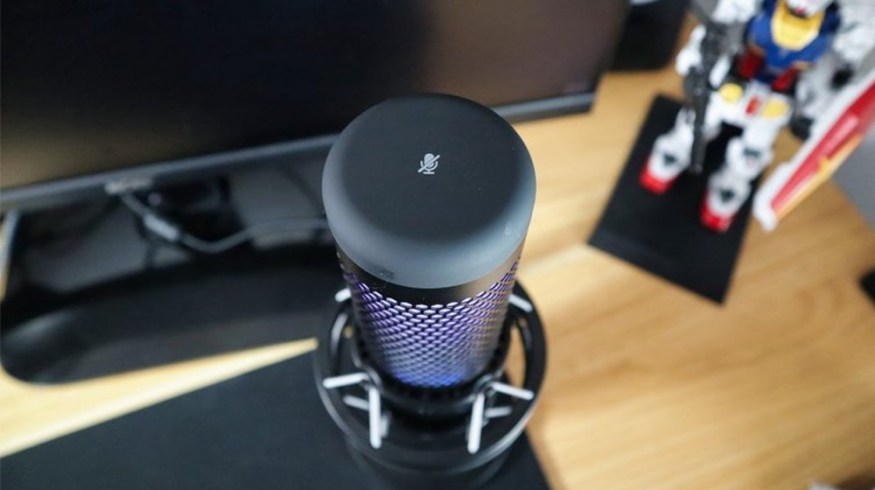
HyperX QuadCast S Review: I Needed This Upgrade
The QuadCast S has built-in features for podcasting, voiceovers, software support, and more. Learn more about why this mic impressed us.
There are a lot of good USB microphones, some of which we’ve written about before on this site, but there’s no denying that HyperX’s QuadCast S is one of the most stylish of the bunch. The aesthetic-focused microphone draws you in with bright, colorful LEDs that can be configured via the Ngenuity software.
HyperX makes gaming peripherals, so it tracks—the lights are to “gamers” what lamps are to moths. The microphone isn’t all style and has no substance, though. There’s plenty here to geek-out over, with built-in functions that microphones from legacy brands sorely lack.
Though pricey (at $160), the microphone is the complete package, sporting a built-in pop filter, solid base stand, and long, braided USB-C cable.
The microphone was made for content creators and streamers in mind. And, while audio snobs may sneer at the fact this is a USB mic with pretty lights, its looks aren’t the best thing about it.
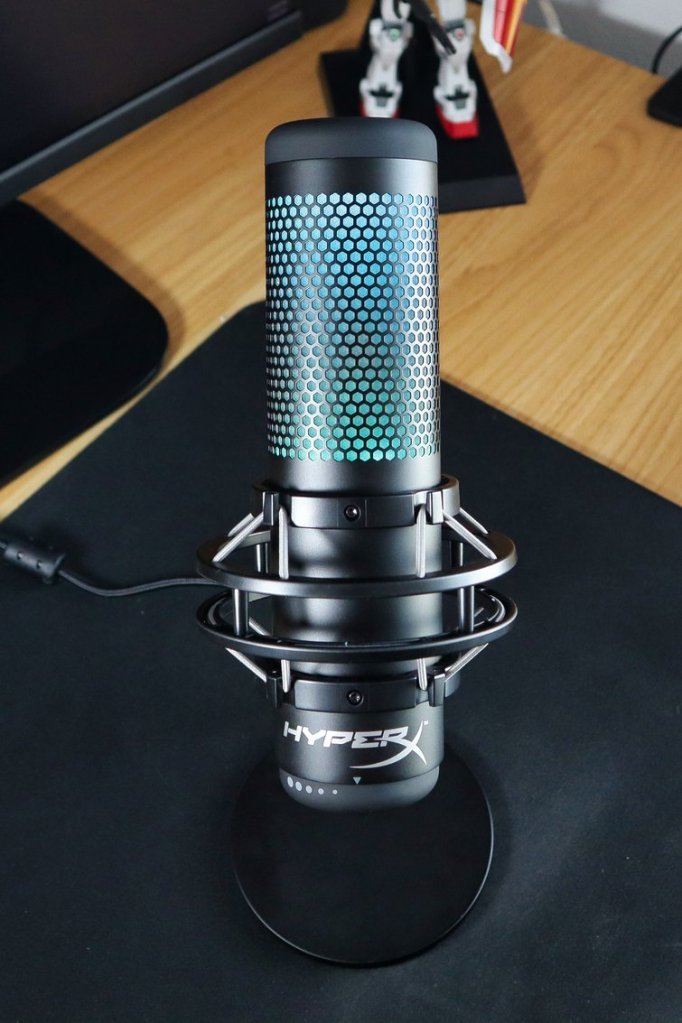
All-in-One Setup
There are a lot of reasons to go with a USB mic. Unlike XLR microphones, USB microphones are plug-and-play, which also means they can’t reach the level of quality of an XLR mic hooked up to an audio interface. The upside, however, is the much lower price.
Either choice is better than the included microphone on your computer or laptop, but a USB mic is a dual-threat of performance and cost. I invested in one years ago, the AT2020 from Audio-Technica. It’s a decent microphone, but I still had to purchase a pop filter, longer cable, and a better stand, making it more expensive than I initially thought. The HyperX QuadCast S, on the other hand, is kitted out—there are no hidden costs here.
The base stand is solid as can be, with a swivel to tilt the mic toward you. The microphone doesn’t touch the base stand, though. Instead, the QuadCast S has built-in hooks for a bungee cord to create a shock mount, which allows the microphone to stay tethered to the stand without making contact and registering vibrations as noise.
There’s also a pop filter placed inside the microphone to help with preventing plosives, which is a clear mark of an amateur recording. I also really appreciate the braided cable, as I’ve lost many cables to my cats.
The cable’s three-meter length is plenty for most setups, including mine. Also included in the box is an adapter to mount the microphone to a boom arm.
If you want to squeeze out a bit more from the microphone, you can download HyperX’s Ngenuity software. The software is pretty bare-bones, though useful. You can change headphone volume, microphone volume, and monitoring volume.
Also, the QuadCast S has adjustable RGB LED lights that can be configured in the software. I wish there were a noise gate feature to reign in the microphone’s sensitivity, like RØDE’s Connect software, but thankfully, I already had the right tools.
Easily Adaptable
The QuadCast S has a game-changing feature—an adjustable polar pattern dial. Most USB microphones you find have a cardioid polar pattern. They capture audio in the direction the microphone is aimed at. It stops being so beneficial for solo podcasting and voiceovers when recording with multiple people.
Unlike virtually every other USB microphone available, this microphone includes a dial that can adjust the polar pattern. Besides a cardioid polar pattern, you have a bidirectional polar pattern for recording with two people sitting opposite sides of the microphone.
The omnidirectional polar pattern is best-suited for recording multiple voices, while the stereo, according to HyperX, is best for vocals and instruments.
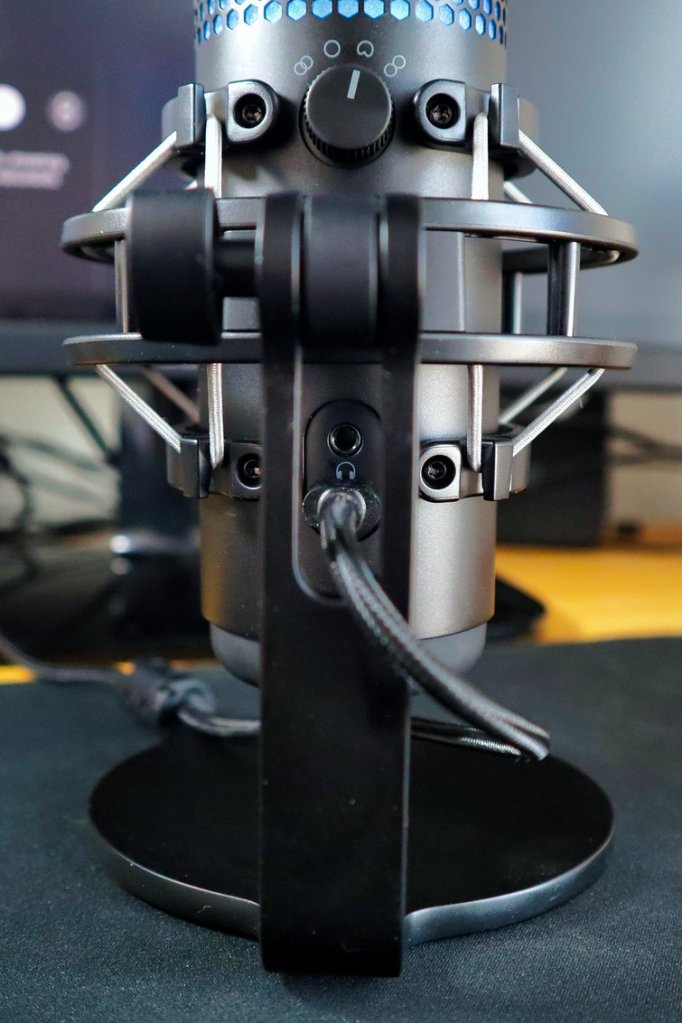
The standard cardioid polar pattern is perfectly suitable for my needs, but I tested the other modes. I noticed the most significant difference with the bidirectional polar pattern, as I could hear clear audio from both the front and back of the microphone.
The Omnidirectional mode can have its uses, but relying on it to record multiple people at once is not something you want to do regularly since you’ll be editing various voices on a single track—it’s not ideal.
However, if you’re in a tight spot, the omnidirectional mode is better than nothing. The stereo mode, which makes it possible to discern left and right audio channels, is the least useful for me, though it could be the cherry on top if you’re a musician.
Changing the polar pattern makes this microphone extremely versatile, especially with the 3.5mm jack. When plugging in a set of headphones—hopefully, studio monitor headphones—you’ll be able to tell if too much sound is coming through and adjust on-the-fly.
It’s better to monitor via this headphone jack since it’s very low latency. In HyperX’s Ngeneuity software, you even have the option to adjust the mic monitoring levels or turn it off completely.
When editing audio, you’ll want to turn off monitoring not to get distracted. And, while it’s easy enough to do, it would have been nice to have a physical way to toggle it—similar to muting the microphone.
Regardless, the monitoring on this microphone is better than what I’ve experienced before at this price point.
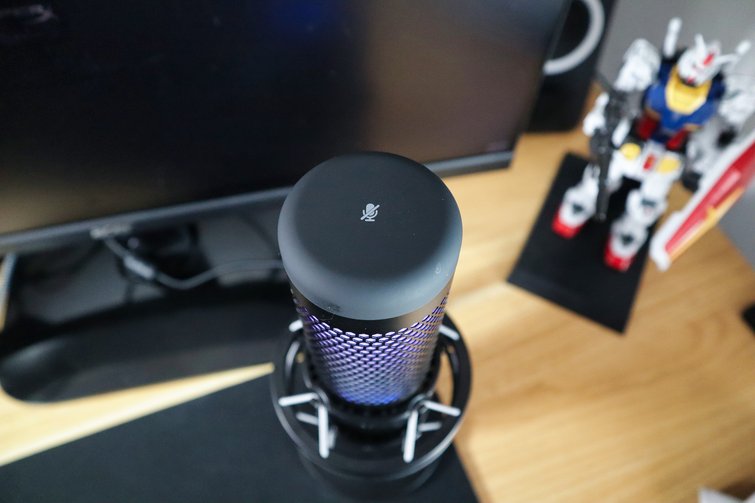
Another feature built into the microphone is the tap to mute function, which works as described. Tapping on the top of the microphone disables the microphone and shuts off the RGB lights. This neat trick comes in handy if you’re in the middle of a recording, streaming, or meeting.
Too Sensitive
Condenser microphones, like the QuadCast S, are known for their sensitivity. In quiet, treated rooms, the high sensitivity isn’t a problem, but it does become a problem if there’s any noise.
Noises like the whirr of a fan or A/C, barking, sirens, and breathing will be captured on the microphone. After testing the microphone, I wasn’t shocked to find out how sensitive it was. It’s a problem I’ve had before with other condenser microphones.
The QuadCast S is equipped with a gain dial at the bottom of the microphone to deal with sensitivity. The gain dial adjusts the microphone’s sensitivity. Lowering the gain makes the microphone less prone to pick up quiet sounds, while increasing it does the opposite.
Gain can also affect the loudness of the audio, with higher gain capable of distorting the sound. You’ll want to check your audio levels while adjusting the gain to make sure it’s in the right spot, which, according to my broadcast professor in college, is between -6db to -12db for the loudest parts of your audio.
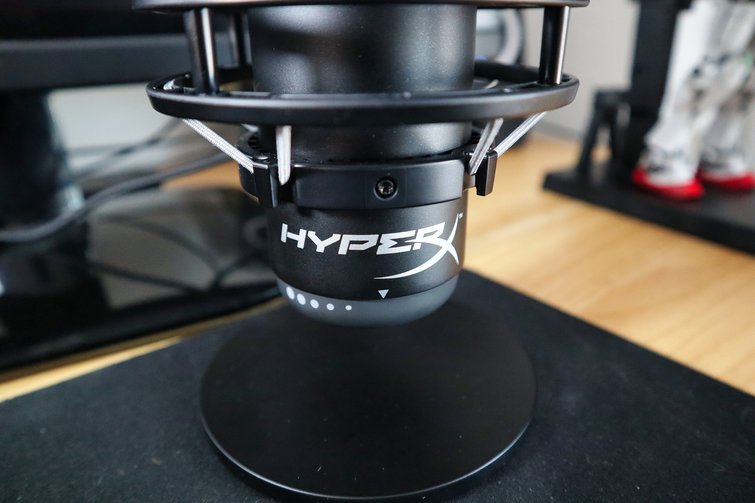
The gain dial can help with not picking up unwanted noise, but setting the gain too low also affects the quality of your audio and can make your voice sound flat. You’ll have to deal with the sensitivity via software.
For example, on DaVinci Resolve, you can easily set up a noise gate to get rid of quiet sounds, such as your breathing or the sound of your A/C.
After setting the noise gate, the sound of my PC fans completely went away, and the audio sounded better overall. It was like night and day, honestly (check it out below).
Other NLEs or DAWs should have similar settings. That’s nice for recording, but you can also do it while live-streaming on Twitch—you can set a noise gate on OBS. The extra step is a bummer, but it’s worth setting up.
Light the Way
The biggest issue I had with this microphone was weird, and I couldn’t fix it. For some reason, having the microphone plugged in prevented my computer from going to sleep—it would immediately wake up after sleeping. Disconnecting the microphone was the only way to fix the problem temporarily.
Unfortunately, it seems that I’m not alone, other users have complained about the same issue on Reddit. To find out if there’s a fix, I spoke with a HyperX representative who told me the team was working on it. As of this writing, however, the problem persists. A future firmware update will hopefully fix the issue.
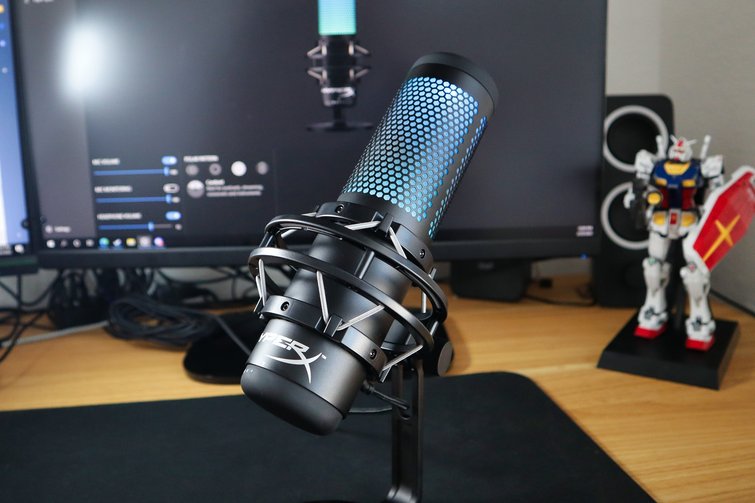
Despite the one odd blemish, the QuadCast S gets top marks. It has tons more functionality and features than my current microphone, with built-in accessories like a pop filter and a stand that make the $160 price tag much easier to accept.
In addition, the adjustable polar pattern, gain dial, and headphone jack gives me more control when recording. And, whether you care about looks or not, the QuadCast S stands out with its RGB lights and large build.
Although the microphone I had wasn’t bad, there’s just no going back to it after trying the QuadCast S.
Need more mic advice? We’ve got you covered:
- Easy Audio: The New Deity Pocket Wireless Microphone
- Attention Vloggers: Meet Deity’s Smallest Microphone—The V-Mic D4 Mini
- The Best Lavalier Microphones for Video Production
- Blind Microphone Comparison with 5 Different Mics!
- The Mic Picker: How to Find the Right Microphone
All images via Alejandro Medellin.


